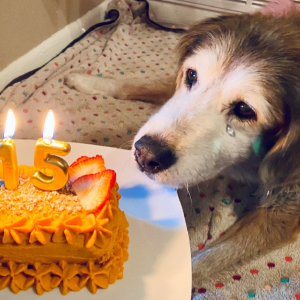Meet my new friend the cassowary, a large, flightless bird closely related to the emu. While all birds are living dinosaurs, the dagger-clawed cassowary has definitely continued to dress the part.
Here are some fun facts about this mysterious beast.
1. The southern cassowary is earth’s second-heaviest bird.
There are three species of cassowary all found in Oceania – the dwarf cassowary is the smallest, with an average height of around 3 feet followed by the northern cassowary, which can stand nearly 5 feet tall, then the southern cassowary that we have here that stands around 5.5 feet tall. The only two birds that grow taller are ostriches and emus. Adult southern cassowary females are larger than the males weighing in at approximately 157 pounds with the males weighing around 121 pounds. They are second only to ostriches in weight.

2. Don’t be fooled, they can kill you
Cassowaries almost look like a turkey crossed with a velociraptor but don’t be fooled, they can be deadly. Normally, cassowaries are shy and reclusive, but can become aggressive when threatened and retaliate with powerful head-butts and pecks. Their secret weapon is the razor-sharp 5-inch claw on the middle toe of each foot. The birds are known to deliver a series of downward kicks that have been known to break bones and cause fatal lacerations. Nicknamed the “murderbird”, cassowaries and their cousins the emus are among the few species of bird known to have killed at least one human.

4. They can jump five feet off the ground
Attacking cassowaries charge and kick but to get the most out of those toe daggers, they will sometimes jump feet-first at an attacker, with the claws slashing downward in midair. Needless to say, with a bird this size that is no “bunny hop” but some Olympic medal high-jump type stuff. Get this…they can jump up to seven feet in the air, yes, seven, and to add insult to injury, they’re also great sprinters clocking times of 30 miles per hour.
5. They have what resembles a giant toenail on their heads
As if its size wasn’t intimidating enough, cassowaries come fitted with a helmet – what’s called a “casque,” on the top of its head made of a spongy material covered in keratin (yes, the same material our hair and fingernails are made of). The casque begins to form once the bird reaches the age of two. While no one knows why they have a casque, you have to admit it definitely adds to the almost medieval look of the bird. It has been speculated that the casque could reveal a bird’s age or is a symbol of its dominance or can be used a shock absorber to protect the animal’s head as it navigates through the rainforest underbrush. It has even been speculated that the casque somehow aids the bird in making its mating calls.

7. Cassowaries have strange genitalia.
Both sexes have a pseudo-penis that isn’t connected to any of their internal reproductive organs. When cassowaries mate, the male inseminates the female via his cloaca, an orifice at the base of the pseudo-penis (so, what exactly is the purpose of the pseudo-penis then? hmmm). When they aren’t mating, the males’ pseudo-penis is turned inside out and retracted. Very strange indeed!
8. They Can Live For More Than 50 Years
In captivity, a cassowary can live as long as 60 years, however, in the wilderness it’s unclear how long these birds can last.
9. Cassowaries Lay Green Eggs
Southern cassowaries lay green eggs! The eggs are a vibrant greenish color thanks to a special pigment (biliverdin) found in the shells.
10. Cassowaries Nest on the Ground
Some birds use treetops to escape ground predators, but cassowaries are ground-nesting birds. With a bird this size, I’d say that is a novel idea. They use a hollow depression on the ground for their large eggs and the male cassowary will sit on the giant eggs for about two months keeping them warm and safe from predators, such as quolls, dingoes, pythons, and crocodiles.
11. Cassowaries use infrasonic booms to communicate.
When breeding season comes around, cassowaries will use infrasonic booms to communicate. While the booms are low-frequency sounds humans aren’t able to hear, available mates listen attentively. Cassowaries also exhibit throat and neck swelling, high stepping, and head shaking to attract a mate – talk about “shaking a tail feather”.





